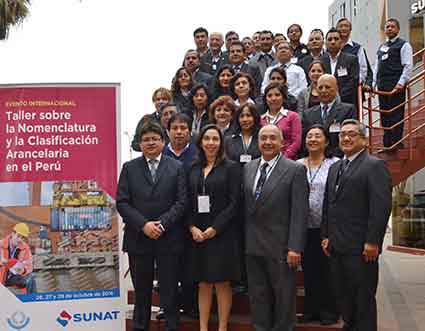The world’ gets ready for latest ‘harmonized’ key tariff changes
- News Feed
- Tuesday, 29 November 2016
Customs and border protection agencies throughout the Asia Pacific region – around most of the world, in fact – have been reminding their cargo sectors of a vital date looming on the calendar: January 1 2017. This is when the latest edition of the Harmonized System clicks into place and it is essential that everyone in the industry is up with the play.
The Harmonized System (HS) is administered by the World Customs Organization and is just what its name says: A global tariff structure which is at the core of efficient world trade.
It is updated by the WCO every five years, with input from national agencies, consultation with the freight trade and shippers, workshops and discussions at various levels and eventually a joint agreement.
HS is solely structural and its updating does not affect rates of duty.
HS 2017, like its predecessors, accommodates advances in technology and changes in the patterns of trade, as well as aiming to improve the system through clearer explanations, minimisation of commercial or political gobbledygook and dealing with anomalies identified in the past few years.
Each country is required to update its tariff through legislative amendments. This involves statistics agencies as well as Customs/border protection.
In Australia the Customs Tariff Amendment (2017 Harmonized System Changes) Bill was introduced to parliament on October 13, making some 950 changes to the Customs Tariff Act 1995. On the same day the Customs Amendment (2017 Harmonized System Changes) was introduced; this makes complementary amendments to the Customs Act 1901.

Earlier, the Australian Bureau of Statistics released an information paper on the Australian Harmonized Export Commodity Classification (AHECC) which applies HS to exports.
A review of Tariff Concession Orders (TCOs) potentially affected by the HS 2017 changes also has been undertaken. Old TCOs will be revoked from December 31. The Tariff Advice System allows importers to seek an advance ruling on the classification of specific goods before importation. This is to assist industry to make business decisions about future importations of specific goods.
The Department of Immigration and Border Protection has undertaken a review of both Tariff Precedents and Tariff Advices potentially affected by HS 2017. It will notify businesses whose advice will be affected. It will then be necessary to apply for new Tariff Advices.
Product specific rules under free trade agreements are being updated with partner countries through inbuilt agreement review procedures.
Among significant changes in HS 2017 are new sub-headings to account for shark fins, additional reference to certain narcotic substances at the behest of the UN International Narcotics Control Board, a change for dairy products “obtained from milk by replacing one or more of its natural constituents”, new definitions, several changes reflecting chemical weapons agreements, a legal note clarifying the classification of battery packs and of other products such as carpet tiles, amendments reflecting technological changes in the auto industry, section expansions for a variety of products such as multi-component integrated circuits (in line with the Expanded Information Technology Agreement) and LED lamps and clarification of sports clothing incorporating certain protective components.
A full list of the changes is available through the WCO web site www.wcoomd.org and through national agencies: www.border.gov.au and www.customs.govt.nz
The ABS will publish the HS 2017 changes to Merchandise Trade Import Statistics on its web site in December.
(More details are carried on Andrew Hudson’s review of changes, page 12 this issue.)










